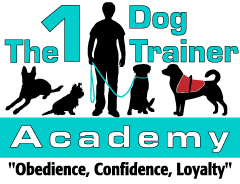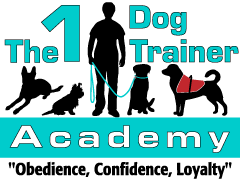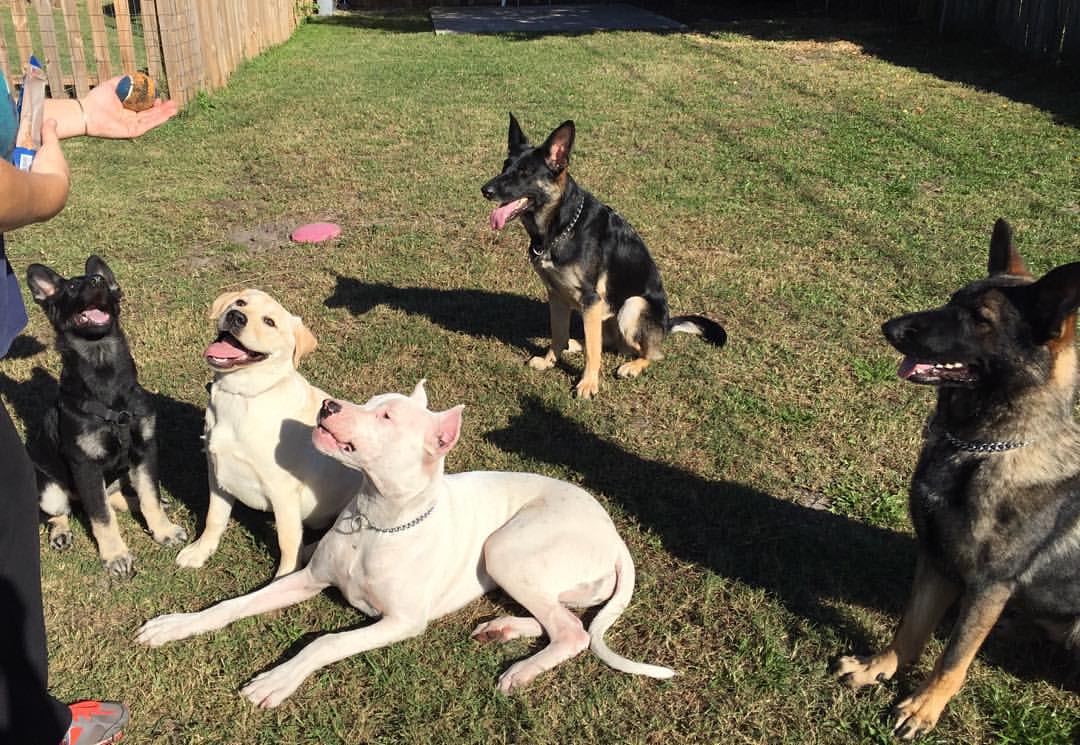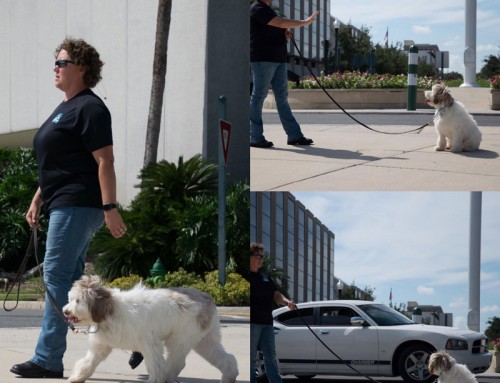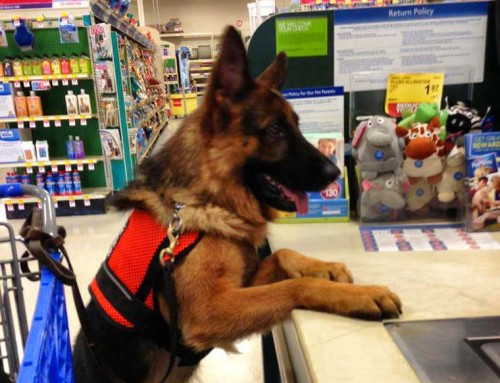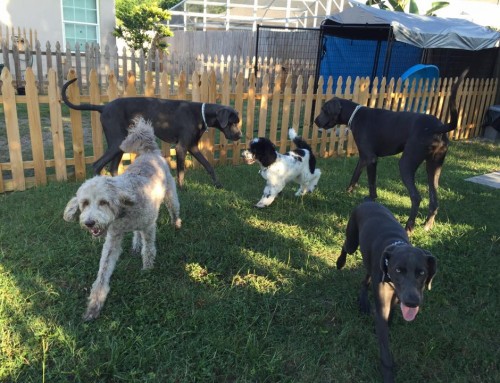One of the most common questions I get asked is WHY should I send my dog to you for training?
It boils down to two things: What is best for your dog, first, and what is best for you, second. There are four main types of dog training: club style dog training, in-home dog training, group dog training, and academy / boot camp dog training, which is the type we have at The 1 Dog Trainer Academy. Our Academy style training isn’t for every dog and owner, so we recommend that owners learn about each type of dog training before you settle on the type that’s right for your dog and you.
Dog training clubs
If owners would like to be part of every step of their dog’s education and have the time devoted to this training, then I encourage them to find Club Training. This would be great for someone looking to get into organized Club Events, such as Rally, Agility, or Conformation. This is especially recommended when starting with a puppy who is ready to take on the world. However, the average person who adopts or purchases a puppy or adult dog doesn’t have the time needed to train the pup or dog and sometimes expects it to “Already Know How to be a GOOD DOG.” This isn’t the case 95% of time. Yes, you hear amazing stories from your friends and family about how they bought the world’s easiest puppy to raise, or adopted the best dog ever. It does happen! Thankfully for me and the other dog trainers out there, this is exceptionally rare!!
In-home dog training
So, then you have to decide: Do we have a trainer come to the home? Again, this can be a good choice depending on your lifestyle as well as your dog’s needs. By putting your dog first, think of it like this. If you have someone guiding you how to raise your puppy and train your dog every step of the way for an hour a day maybe once or twice a week, are you willing to do exactly what they have said during the days between your in-home visits? Do you take instructions well enough to transfer that information to your pup or dog? Consider this, what is your pup/dog’s issue that has required you to get help from a trainer? Are you being a proactive, responsible pet owner and getting a step ahead of the game? Or, are you a frustrated dog owner who has “Done Everything” with no results and now seek the help of a professional?
Most behavior (good and bad) is a direct cause of the environment in which the dog lives. For example, when you purchase a puppy the hardest thing to resist is picking the puppy up and holding/carrying everywhere. Jumping is a direct result of a puppy being picked up and snuggled by your face from the time you get them. Your 5, 10, or 15 pound puppy has no idea that when it’s 30, 60, or 100+ pounds that you don’t want to, or physically cannot hold them anymore. Instead, when you get those adorable, pleading puppy eyes and the pawing at the pant legs, bend down to your dog’s level or get on the floor to play with them. This way you are showing them you come down to them, they do not come up to you! Are there any other bad habits that YOU could have shown your pup? Maybe a tiny little handout while you are cooking or eating dinner? This causes the begging, drooling stare downs at EVERY meal! These are all learned bad behaviors and usually the most difficult to correct. What about going to the bathroom in the house, chewing, play biting, and digging?
These are behaviors ALL puppies and dogs do, and they need your guidance and training to show them good from bad. Do you have the time, energy and patience to do this all yourself with only a few hours of guidance from your trainer? Most in-home trainers focus on the behaviors and some obedience. It isn’t uncommon to have an in-home trainer who doesn’t teach obedience to your dogs but will spend the majority of the time telling you how to train your own dog while focusing on the behavioral side of your issues. If you are happy with your dog’s obedience skills and you only need assistance with negative behaviors in your home, then this option may be the best for your pup and you.
Group dog training classes
Your next option is Group Classes at your local pet store or dog facility. Again, not a bad way to go if your puppy is social, and you have the time to commit to the training schedule and are willing to have someone teach you how to teach your own dog yet never handle the pup themselves. However, what happens when you have that puppy who isn’t as quick to learn as the other puppies? The trainer may spend more time with those owners as they are seeing better results. Or what if your pup’s personality isn’t right for this and they bark or cry and act badly in class? Some trainers will actually remove owners and their dogs from those classes! How is this a benefit to your pup? This isn’t saying all group training sessions or group trainers are the same, just like all pups aren’t the same. If your pup is that star pup then this training could be the best choice for your pup and you!
Academy style dog training
So now we come to Academy style also known as Boot Camp or facility style training. The HARDEST part of this style is having to give your baby up for an extended period of time. I’ve seen some courses that are 4 weeks long or up to 6 months long. Our Academy Classes are only 2 weeks long. Do we offer a longer course? No, but we do offer different stages of training courses. This is similar to a child who may go to a Pre-K before starting Elementary School, then progress to Middle School and on to High School before taking that last endeavor of their education to the college level.
The one thing we have in common with that is we are working with the maturity level and attention span of your puppy. We will not force your 12 week old puppy to learn commands they are not mature enough to effectively follow through with. Can I teach him/her to sit, down, stay come and walk on a leash? Absolutely. But I do not expect your 12 week old puppy to do it the same as an 8 month old pup who is at a different level of training. Just like I don’t expect the 8 month old pup to perform at the same level of a more mature one year old dog in training. We work with a dog’s natural ability to learn through associative and habitual learning while encouraging and rewarding good behavior and setting a routine that is consistent every day. Once a dog consistently does the routine it has been taught to do then your dog has effectively learned a command or good behavior through association. A direct example of this: We teach all dogs to sit, stay and wait before entering and exiting all doorways. Dogs who know basic commands of sit & stay, getting them to understand waiting while you open and exit the doorway is just part of an associative habit. We tell them what is expected of them, and when they do not follow the command we will re-set them and try again. We continue this until the dog automatically sits and waits to move through the door without a release command.
This style of training is successful because you have a professional trainer teaching your dog all the commands and associative habits needed to be a well behaved and obedient dog. Once a dog is has learned the commands, then teaching the owner how to handle their own dog is easy since the dog already knows what to do!! However, if the owners are not willing to put in the time with the trainer and the dog, then the dog has a higher chance of not showing the owners what it knows. So a good professional trainer will ensure the owners are 100% up to par on all areas of handling, not only in obedience but with any behavioral issues the pup / dogs may have had.
What’s next?
Once you have decided on the type of trainer and courses offered, you are ready to choose for your puppy/dogs education what methods of training will be right for your pup!
Just remember, choosing a qualified, professional trainer for your pup should be no different than choosing the best education, doctor, dentist, or babysitter for your children. You put the needs of your child’s before your own just as you will need to do for your puppy. When selecting a trainer and training style, you put your dogs first, and yourself second.
